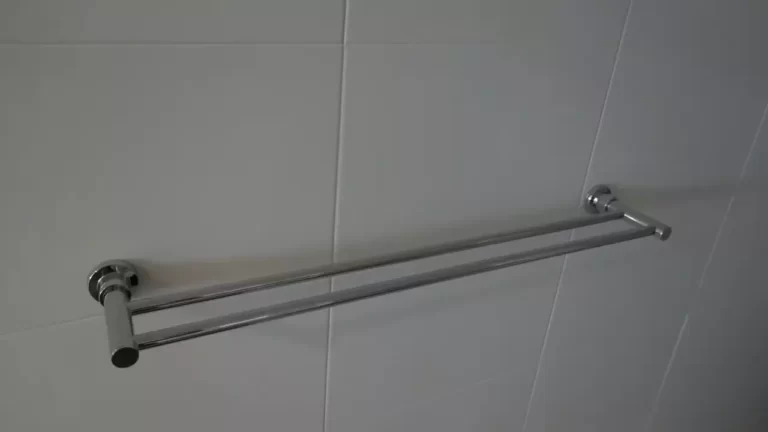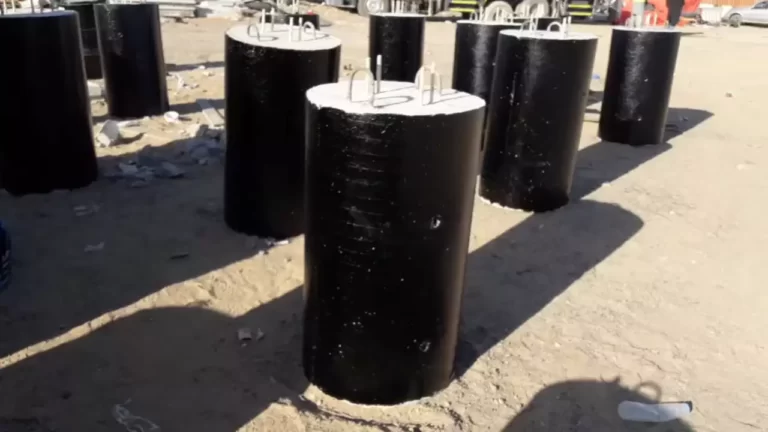How to Install Expansion Screws?
To install expansion screws, mark the spot, drill a hole, and then screw the expansion screw into the hole. Expansion screws are a handy tool for attaching items to walls or other surfaces.
Whether you’re hanging a shelf or securing a heavy object, expansion screws provide a reliable and sturdy solution. However, it’s important to know how to properly install them to ensure they work effectively. We will guide you through the step-by-step process of installing expansion screws.
By following these simple instructions, you’ll be able to confidently complete your project in no time. So let’s get started!
Understanding Expansion Screws: What They Are And How They Work
If you are undertaking a construction or renovation project, you may come across the need to install expansion screws. These versatile fasteners are commonly used in various applications, from securing heavy structures to anchoring objects to different surfaces. Understanding expansion screws is essential to ensure their correct installation and optimal performance. In this article, we delve into the world of expansion screws, explaining what they are, how they work, and the key components that make up these valuable fasteners.
What are expansion screws?
Expansion screws, also known as expansion anchors or expansion bolts, are mechanical fasteners used to create a secure connection between an object and its supporting structure. They are designed to provide strength and stability, enabling the attachment of materials to different surfaces such as concrete, masonry, or even wood.
The unique characteristic of expansion screws is their ability to exert expansive force once installed. This force is what enables them to grip the surrounding material tightly, providing a secure and durable attachment. Expanding as they are tightened, these screws ensure that your installation remains in place, even under significant weight or pressure.

The science behind expansion screws
Understanding the science behind how expansion screws work can help you appreciate the power and effectiveness of these fasteners. When an expansion screw is inserted into a pre-drilled hole, its design enables it to expand or push against the surrounding walls of the hole.
This expansion process relies on the wedge design of the screw’s sleeve or anchor component. As you tighten the screw, the wedge shape forces the sleeve to expand, increasing its diameter and creating a tight grip within the hole. The expansion force generated creates friction between the fastener and the surrounding material, allowing the screw to remain secure.
Key components of an expansion screw
To better understand how expansion screws work, it is essential to familiarize yourself with their key components. The main parts of an expansion screw include:
- Head: The head of the screw provides the surface for gripping and tightening with a suitable tool, such as a wrench or screwdriver.
- Threaded shaft: This cylindrical shaft consists of helical threads, allowing the screw to be secured into the material.
- Sleeve or anchor component: The sleeve, also known as the anchor, is the critical part responsible for expanding and gripping the surrounding material. Its wedge shape design and unique construction provide the necessary expanding force.
With these components working together, an expansion screw can securely anchor objects to different surfaces, offering reliable support and longevity.
Understanding expansion screws’ purpose and function is crucial when it comes to their successful installation. By grasping the science behind how they work and the key components that make them effective, you can confidently utilize these fasteners in your construction or renovation projects.
Tools And Materials You Will Need
Before you start installing expansion screws, it’s important to gather the necessary tools and materials to ensure a smooth and successful installation. This section will outline the essential tools, types of expansion screws, and additional materials required for the installation process.
Essential tools for installation
When it comes to installing expansion screws, having the right tools on hand is crucial. Here are the essential tools you will need:
- Power drill: A power drill will make the installation process much easier and faster. Make sure to have the appropriate drill bits for the size of the screws you are using.
- Screwdriver: While a power drill can be used for driving the screws, a screwdriver is handy for fine adjustments or when dealing with delicate materials.
- Hammer: A hammer will be useful for tapping the screw anchors into place, especially if you are working with harder surfaces.
- Tape measure: Accurate measurements are essential to ensure proper placement and alignment of the expansion screws. A tape measure will help you achieve precision in your installation.
- Pencil or marker: Marking the spots where the expansion screws will be installed is crucial for accuracy. A pencil or marker will allow you to easily mark the areas without causing damage to the surface.
- Safety goggles and gloves: Safety should always be a priority when working with tools. Protect your eyes with goggles and wear gloves to prevent injury.
Types of expansion screws and their uses
There are various types of expansion screws available, each designed for specific applications. Here are some common types and their uses:
| Type of Expansion Screw | Uses |
|---|---|
| Toggle bolts | Perfect for heavy-duty applications such as hanging large mirrors or shelves on drywall. |
| Metal expansion anchors | Ideal for installing objects on concrete or masonry surfaces. |
| Plastic expansion anchors | Suitable for lightweight installations on drywall or plaster. |
| Winged plastic anchors | Well-suited for installations in hollow walls or hollow doors. |
| Sleeve anchors | Great for securing heavy objects to solid materials such as concrete or brick. |
Additional materials required for installation
In addition to the essential tools, you will also need some additional materials to complete the installation. These materials include:
- Screws: Choose screws that are compatible with the expansion anchors you will be using. Be sure to select the appropriate length based on the thickness of the materials you are working with.
- Drill bits: Depending on the type of expansion screws and materials, you may need specific drill bits to create pilot holes.
- Anchor bolts or screws: These are the actual expansion screws that will be inserted into the anchors. Make sure to choose the right size and style for your project.
- Wall plugs: If you are installing expansion screws in hollow or thin walls, wall plugs will provide additional support and stability.
- Level: To ensure that your installation is straight and level, use a level to guide your positioning.
By gathering these tools and materials, you will be fully prepared to tackle the installation of expansion screws and achieve professional-looking results. Remember to always follow the manufacturer’s instructions for the specific type of expansion screws you are using.

Preparing For The Installation Process
Before you start installing expansion screws, it’s crucial to prepare the installation area properly. Proper preparation ensures a successful installation and helps to avoid any issues down the line. In this section, we will discuss how to evaluate the installation area, measure and mark the areas for installation, and prepare the surface for installation.
Evaluating the Installation Area
The first step in preparing for the installation process is to evaluate the area where the expansion screws will be installed. Take a close look at the surface to determine if it is suitable for installation. Look for any obstructions, such as electrical wires or water pipes, that may interfere with the installation. Additionally, ensure that the surface is sturdy enough to handle the expansion force exerted by the screws.
Measuring and Marking the Areas for Installation
Once you have evaluated the installation area, the next step is to measure and mark the areas where the expansion screws will be installed. Using a measuring tape, carefully determine the distances between each screw. Make sure to follow the manufacturer’s guidelines for spacing between screws to ensure proper anchoring.
After measuring, mark the spots where the screws will be installed using a pencil or marker. These markings will serve as a guide during the installation process, ensuring accurate placement of each screw.
Preparing the Surface for Installation
After marking the areas for installation, it’s essential to prepare the surface to ensure a secure and long-lasting installation. Start by cleaning the surface thoroughly, removing any dirt, debris, or loose material. Use a brush or vacuum cleaner to get rid of any loose particles that could interfere with the installation.
Note: If the surface is made of a porous material, such as concrete, it may be beneficial to apply a primer or sealant before installation. A primer can improve adhesion and ensure a stronger bond between the surface and the expansion screws.
Next, ensure that the surface is dry and free from moisture. If the installation area is damp, allow it to dry completely before proceeding with the installation. Remember, moisture can affect the performance of the expansion screws and compromise the integrity of the installation.
Pro Tip: If you are installing the expansion screws on a vertical surface, use a level to ensure that the markings are aligned properly. This will help maintain a straight and even installation.
By following these steps to evaluate the installation area, measure and mark the areas for installation, and prepare the surface accordingly, you are setting yourself up for a successful installation of expansion screws. Taking the time to prepare properly ensures a secure and durable installation that will stand the test of time.
Step 1: Drilling The Pilot Holes
Drilling the pilot holes is a crucial first step in installing expansion screws. It helps ensure that the screws are inserted accurately and securely. In this step, we will guide you through the process of drilling the pilot holes, covering everything from selecting the appropriate drill bit to drilling the holes accurately.
Selecting the appropriate drill bit
The first thing you need to consider when drilling pilot holes is selecting the appropriate drill bit. The drill bit you choose should be compatible with the material you are working with. You want a drill bit that will create clean and precise holes without causing any damage to the surrounding area.
To determine the appropriate drill bit, you should take into account the type of material you are working with. For example, if you are drilling holes in wood, a standard twist drill bit with a sharp point will work well. On the other hand, drilling into metal may require a specific type of drill bit designed for metal surfaces.
Determining the correct size of pilot holes
Once you have selected the appropriate drill bit, the next step is to determine the correct size of the pilot holes. The size of the pilot holes will depend on the size of the expansion screws you are using. It is important to use a drill bit that matches the diameter of the screws or slightly smaller to ensure a snug fit.
Refer to the manufacturer’s instructions or the packaging of the expansion screws to find the recommended drill bit size. Using the wrong-sized drill bit can lead to holes that are either too small, making it difficult to insert the screws, or too large, compromising the integrity of the installation.

Drilling the pilot holes accurately
Now that you have the appropriate drill bit and know the correct size of the pilot holes, it is time to drill the holes accurately. Here are some tips to ensure you drill the pilot holes accurately:
- Mark the drilling spots: Use a pencil or a marker to mark the exact spots where you want to drill the pilot holes. This will help you maintain accuracy and prevent any mistakes.
- Straight drilling: Hold the drill perpendicular to the surface and apply steady pressure while drilling. This will help you achieve straight and precise pilot holes.
- Depth control: It is crucial to drill the pilot holes to the correct depth. To achieve this, you can use a piece of tape as a depth stop on the drill bit, ensuring that the holes are drilled to the desired depth.
Remember to take your time and be patient while drilling the pilot holes. Rushing the process may result in inaccurate holes, which can affect the overall installation of the expansion screws.
By following these steps, you will be able to drill the pilot holes effectively and prepare the surface for the next step in installing expansion screws.
Step 2: Inserting The Expansion Screws
Now that you have prepared the pilot holes, it’s time to move on to the next step – inserting the expansion screws. This crucial step will ensure that the screws are securely anchored in place and ready to provide the desired support.
Holding the expansion screw properly
Before inserting the expansion screw, it’s essential to hold it properly to ensure steady and precise insertion. Holding the screw by its head, position it at the entrance of the pilot hole. Make sure you have a firm grip to ensure accuracy and avoid any unnecessary movements that could misalign the screw.
Aligning the screw with the pilot holes
Once you have a firm hold on the expansion screw, carefully align it with the pilot holes you created in the previous step. Alignment is crucial to ensure that the screw goes in straight without any resistance or twisting. Gently guide the screw into the holes, making sure it enters smoothly.
Inserting the screw and turning it clockwise
With the screw properly aligned with the pilot holes, it’s time to insert it and begin securing it in place. Start by inserting the screw into the holes and pushing it into the surface you are working on. As you do this, apply gentle pressure to ensure the screw enters smoothly and doesn’t get stuck.
Once the screw is inserted, start turning it clockwise using a screwdriver or the appropriate tool. The clockwise motion will engage the expansion mechanism of the screw, causing it to expand and create a secure hold. Keep turning the screw until it feels snug and secure.
Note: If you encounter any resistance or difficulty while turning the screw, do not force it. Instead, back it out slightly and realign it with the pilot holes before trying again. Forcing the screw may lead to damage or an uneven installation.
Repeat this process for each expansion screw, ensuring that each one is inserted and turned clockwise securely. Taking the time to properly insert and tighten each screw will ensure a strong and durable installation.
Step 3: Tightening The Expansion Screws
Once you have inserted the expansion screws into the designated holes, the next crucial step is to tighten them properly. Proper tightening ensures a secure fit and prevents any potential issues in the future. In this step, we will discuss the correct tools to use for tightening, how to apply sufficient torque, and the recommended technique to ensure each expansion screw is tightened effectively.
Using the correct tool for tightening
When it comes to tightening expansion screws, using the correct tool is paramount. The tool you will need depends on the type of expansion screws you are working with. Here are the common tools for tightening expansion screws:
| Type of Expansion Screw | Recommended Tool |
|---|---|
| Standard Expansion Screws | Phillips head screwdriver |
| Hollow Wall Anchors | Screwdriver or drill with an appropriate bit |
| Toggle Bolts | Wrench or pliers |
| Metal Expansion Anchors | Wrench or socket set |
Always ensure that the tool you are using fits tightly into the screw head to avoid slipping and damaging the screws or surrounding materials.
Applying sufficient torque for a secure fit
To achieve a secure fit, it is essential to apply sufficient torque when tightening expansion screws. This means applying enough force to firmly secure the screw in place without over-tightening and risking damage. Follow these guidelines:
- Start by gripping the tool firmly and positioning it securely on the screw head.
- Apply steady pressure while turning the tool in a clockwise direction.
- Continue to tighten until you feel resistance or the screw is firmly in place.
Remember, it is crucial to strike the right balance between tightness and not over-tightening, as over-tightening can cause the screw to strip or break, compromising the effectiveness of the installation.

Recommended tightening technique
To ensure each expansion screw is tightened effectively, follow this recommended technique:
- Start at the center of the installation area and work your way outward.
- Alternate between tightening screws in a crisscross pattern.
- Apply consistent torque to each screw until the entire installation is complete.
By following this technique, you ensure an even distribution of tension and avoid potential issues caused by an uneven installation.
Tightening expansion screws correctly is crucial for a successful installation. By using the correct tool, applying sufficient torque, and following the recommended technique, you can ensure a secure fit that will withstand the test of time. Now that you have completed this step, you are one step closer to completing your project with confidence.
Step 4: Checking The Stability And Adjusting If Necessary
After successfully installing the expansion screws, it’s crucial to evaluate their stability to ensure they are securely in place. This step plays a significant role in the installation process, as it allows you to identify any signs of looseness and make the necessary adjustments to tighten the screws accordingly. By following this step, you can guarantee that the expansion screws are working effectively and will provide the desired support.
Evaluating the Stability of the Installed Screws
To begin, it’s essential to evaluate the stability of the expansion screws. This involves examining their overall firmness and determining if they are properly seated within the material. A stable expansion screw should feel secure when pressure is applied and shouldn’t move or shift easily. Ensure that each screw is fitted tightly to eliminate any potential risks in the future.
Identifying Signs of Looseness
Next, it’s important to identify any signs of looseness in the installed screws. Looseness can occur due to various factors such as improper installation or the natural settling of the material over time. Some common signs of looseness include visible gaps between the material and the screw, slight movement or wobbling when pressure is applied, or a feeling of instability. Identifying these signs can help you pinpoint the specific screws that require tightening.
Adjusting and Tightening Any Loose Screws
Once you’ve identified the loose screws, it’s time to adjust and tighten them to restore stability. Begin by carefully inspecting the areas around the loose screws to ensure there are no underlying issues such as damage or cracks. If everything appears to be in good condition, use a suitable tool, such as a screwdriver or wrench, to tighten the loose screws. Apply firm but gentle pressure, turning the screws in a clockwise direction until they are securely tightened.
Take the time to go through each screw individually, giving attention to any areas that feel less stable than others. Regularly check the stability of the installation as you go along, as tightening one screw may affect the tension on adjacent screws. By carefully adjusting and tightening any loose screws, you can ensure that your expansion screws provide the necessary support and prevent any potential accidents or damages.
Troubleshooting Common Issues During Installation
Screw not fitting properly into the pilot hole
One common issue that can arise during the installation of expansion screws is when the screw does not fit properly into the pilot hole. This can often be frustrating and cause delays in the installation process. However, there are a few troubleshooting steps you can take to address this problem:
1. Check the size of the pilot hole: Ensure that the pilot hole is drilled with the correct size to accommodate the expansion screw. Using a drill bit that is slightly larger than the screw’s diameter can help to prevent this issue.
2. Inspect the quality of the pilot hole: Check if there are any obstructions or debris inside the pilot hole that may be preventing the screw from fitting properly. Using a brush or compressed air can help to clear out any debris that may be causing the issue.
3. Try a different screw: If the screw still doesn’t fit properly, consider trying a different screw of the same size to see if the issue is specifically with the screw itself. Sometimes, manufacturing defects or inconsistencies can cause screws to not fit properly.

Difficulty in turning the screw
Another common issue during the installation of expansion screws is when there is difficulty in turning the screw. This can happen for various reasons, but here are a few troubleshooting tips to help you address this problem:
1. Inspect the screw and the anchor: Check if there are any visible damages or deformities on the screw or the anchor. Sometimes, bent screws or damaged anchors can prevent smooth turning. In such cases, replacing the faulty components is the best solution.
2. Apply lubrication: If the screw seems to be sticking or resisting movement, applying a lubricating agent such as WD-40 or a silicone-based lubricant can help to reduce friction and make it easier to turn the screw.
3. Check the alignment of the screw and the pilot hole: Ensure that the screw is properly aligned with the pilot hole. Misalignment can cause resistance while turning the screw. Adjust the position of the screw or realign it with the pilot hole to alleviate the issue.
Uneven expansion of the screw
Uneven expansion of the screw can be another challenge faced during installation. To troubleshoot this issue, consider the following steps:
1. Check the surface material: Evaluate the surface material where the expansion screw is being installed. Some materials may not provide adequate resistance for the screw to evenly expand. In such cases, using a different anchor or seeking professional advice might be necessary.
2. Ensure proper tensioning: While turning the screw, make sure to apply consistent pressure to ensure even expansion. Use a torque wrench or an appropriate tool to control the tension applied to the screw.
3. Inspect the anchor’s condition: Examine the condition of the anchor to determine if it is damaged or worn out. If the anchor is compromised, it may fail to expand evenly. Replace the anchor if necessary.
By addressing these common issues during the installation of expansion screws, you can ensure a smooth and successful installation process. Taking the time to troubleshoot and resolve these problems will not only save you time but also ensure the longevity and effectiveness of your expansion screw installation.
Safety Precautions And Best Practices
When it comes to installing expansion screws, it is of utmost importance to prioritize safety precautions and adhere to best practices. Failure to do so can lead to accidents, injuries, or even damage to property. This section highlights the key safety precautions and best practices to keep in mind throughout the installation process. By following these guidelines, you can ensure a safe and successful installation of expansion screws.
Wearing Protective Equipment During Installation
Personal protective equipment (PPE) plays a crucial role in ensuring the safety of workers during the installation of expansion screws. When engaging in this task, it is vital to wear the appropriate protective gear. This includes:
- Protective goggles or safety glasses to shield the eyes from flying debris or particles
- Heavy-duty work gloves to protect the hands from sharp edges or potential injuries
- Steel-toed safety boots to safeguard the feet and toes from falling objects or accidental impacts
- Earplugs or earmuffs to reduce exposure to excessive noise levels
Wearing the necessary protective equipment ensures that you are well-prepared to handle any potential hazards that may arise during the installation of expansion screws.
Following Manufacturer’s Instructions and Guidelines
To ensure a safe and effective installation process, it is crucial to carefully review and follow the manufacturer’s instructions and guidelines. These instructions provide valuable insights into the correct installation techniques, torque requirements, and other essential information specific to the expansion screws being used. Not following these instructions can lead to improper installations, compromising the stability and reliability of the structure.
Make sure to read the instructions thoroughly before starting the installation process. If you have any doubts or questions, reach out to the manufacturer for clarification. Remember, it is always better to be safe than sorry.
Proper Disposal of Unused Expansion Screws
After completing the installation, you may have some unused expansion screws left over. It is crucial to dispose of them properly to prevent any potential harm to the environment or individuals. Follow these best practices for the proper disposal of unused expansion screws:
- Store the unused expansion screws in a secure and designated area to prevent accidental release or mixing with other waste.
- Check with your local waste management authorities for guidelines on disposal methods specific to expansion screws.
- If recycling facilities are available, consider recycling the unused expansion screws. Recycling helps minimize environmental impact and promotes sustainability.
- If disposal is the only option, ensure that the expansion screws are disposed of in accordance with local regulations. This may involve taking them to a designated waste disposal facility or contacting a professional waste disposal service for assistance.
By disposing of unused expansion screws responsibly, you contribute to a cleaner environment and promote the well-being of your community.
Frequently Asked Questions For How To Install Expansion Screws
How Do Expansion Screws Work?
Expansion screws work by creating a secure anchor point in a wall or other material. By rotating the screw, the two halves of the anchor spread apart, expanding and gripping the material tightly. This allows for the installation of heavy objects or for providing stability to structures.
Where Can I Use Expansion Screws?
Expansion screws are versatile and can be used in various applications. They are commonly used for hanging shelves, mounting television brackets, securing kitchen cabinets, and installing curtain rods. They can be used on different types of walls, including drywall, concrete, and brick.
What Tools Do I Need To Install Expansion Screws?
To install expansion screws, you will need a few basic tools. These include a power drill, drill bits suitable for the material you are mounting on, a screwdriver, and a level for ensuring proper positioning. It is also important to have wall anchors and screws of the appropriate size for the weight and type of object you are installing.
How Do I Choose The Right Size Expansion Screw?
Choosing the right size expansion screw is crucial for a secure and stable installation. The size should be determined based on the weight and nature of the object being mounted. Heavy objects may require larger diameter screws with longer threads for better support.
Consult the manufacturer’s guidelines or seek professional advice if unsure.
Conclusion
Installing expansion screws is a straightforward process that can greatly enhance the stability and durability of structures. By following the steps outlined in this guide, you can ensure a proper and secure installation. Remember to choose the right type of expansion screw for your specific application and consult the manufacturer’s instructions for any additional guidance.
With a little patience and precision, you’ll have a solid foundation that will stand the test of time.







